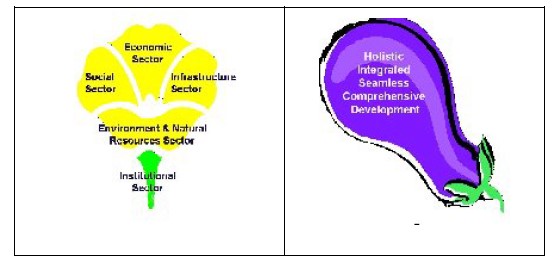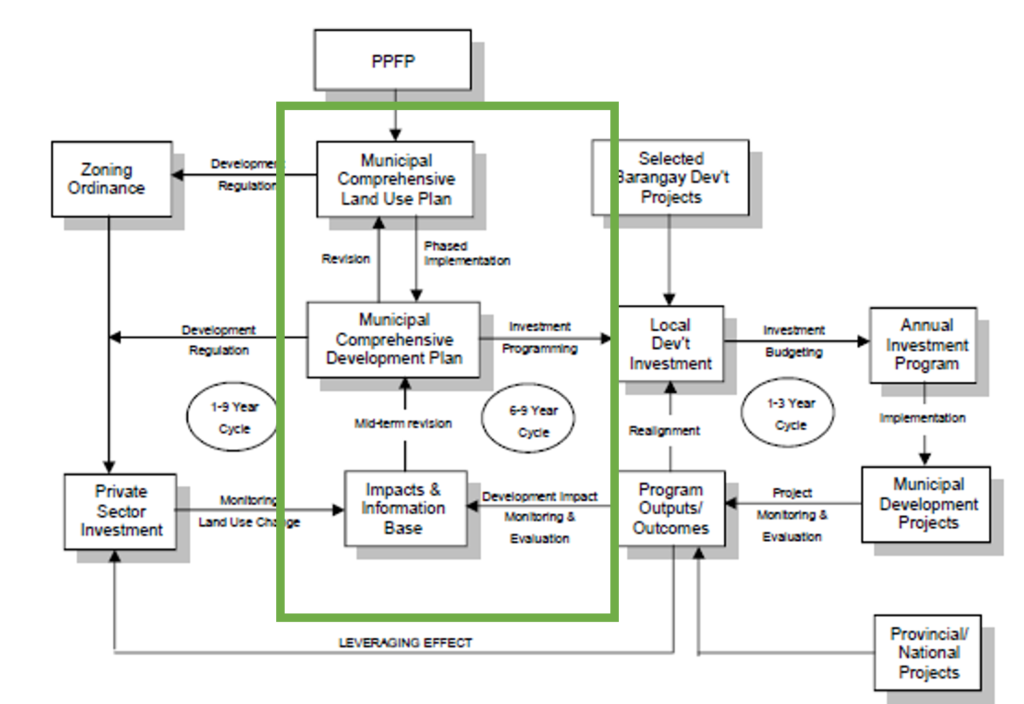How can you review for the Environmental Planning Board Exam more effectively?
Read on for specific tips on how to review for SUBJECT AREA 2 of the Environmental Planning Board Exam!
- Introduction
- Overview of the Environmental Planning Board Exam
- Description of Subject Area 2: Environmental planning process, methods, techniques and strategies
- My Environmental Planning Board Exam Rating
- 3 Top Tips for Reviewing #ENPEXAM Subject Area 2: Environmental planning process, methods, techniques and strategies
- Know the Planning Bibles by heart.
- Determine corresponding techniques and methods for the five development sectors
- Use diagrams and role-play scenarios of planning processes
- Conclusion
- Further Reading
- Do you have additional tips reviewing for passing the Environmental Planning Board Exam?
- Read next!
Introduction
Passing the 2018 Environmental Planning Board Exam was a big accomplishment for me!

And, I saved money by doing successful self review sessions!
You can never be truly prepared for the board exam!
I have written about that in an article about the actual days of my Environmental Planning Board Exam in 2018.
Top resources, all in one page!
Coverage of the Environmental Planning Board Exam
Section 17 of the Environmental Planning Law (Republic Act 10587) enumerates the subject areas of the Environmental Planning Board Exam:
- #ENPEXAM SUBJECT AREA 1: History, concepts, theories and principles of environmental planning;
- #ENPEXAM SUBJECT AREA 2: Environmental planning process, methods/techniques and strategies; and;
- #ENPEXAM SUBJECT AREA 3: Environmental plan implementation, legal aspects and administration
Note: The subject areas and syllabi may be revised as the need arises to conform to changes and new developments brought about by trends in the practice of environmental planning. So always check with the Professional Regulatory Commission for updates!
In short, the Environmental Planning Board Exam covers three broad subject areas!

So, how can you make your self review a success?
A successful self review starts with a review plan.
With the following tips, your review plan for the Environmental Planning Board Exam can be more effective.
The article focuses on Subject Area 2: Environmental planning process, methods/techniques and strategies
Get reviewers for the Environmental Planning Board Exam!
Description of Subject Area 2: Environmental planning process, methods, techniques and strategies
Section 16 (b) of the IRR of RA 10587 enumerates the sub-areas that #ENPEXAM Subject Area 2 “shall include, but not be limited to”
- Planning Information and Management
- research for planning
- map interpretation and spatial analysis
- population data analysis and projection
- Development Planning
- concepts and processes involved in the preparation of the comprehensive development plan
- tools and techniques for sectoral and intersectoral planning analyses
- Land Use Planning
- concepts, principles, and processes involved in land use planning
- demand and supply of land
- spatial strategies
- land use controls
- Area Development Planning
- concepts, principles and processes involved in site development planning and management of ecosystems
Read: Frequently Asked Questions about Environmental Planning in the Philippines
My Environmental Planning Board Exam Rating
Here’s my overall rating for the 2018 Environmental Planning Board Exam.

I scored 76% in Subject Area 2, passing grade but not satisfactory.
You can say that I am an outsider looking into the local planning process. I have not been an employee in the local government.
The knowledge I have of the environmental planning process were largely from my curiosity of the Local Government Code.
My experience being part of the team who updated the Comprehensive Land Use Plan of the Municipality of Tiwi also helped..
Of course, completing six units of courses from the School of Urban and Regional Planning also helped me create my mental framework of the local planning process.
Read: Increase your urban planning knowledge by following these sites!
Receive articles on urban planning and solid waste management!
Related Articles:
3 Top Tips for Reviewing #ENPEXAM Subject Area 2: Environmental planning process, methods, techniques and strategies
Know the Planning Bibles by heart.
In order to plan local governments effectively, environmental planners must instill the principles and practices in 3 Filipino environmental planning Bibles.
First, the Rationalized Planning System guidebook.
The RPS prescribes the ideal local planning structure in relation to the national planning hierarchy.
Second, the Local Government Code of 1991.
The landmark law and its implementing rules and regulations are fundamental references for anyone involved in local government affairs.
One mistake I made during my self review for the Environmental Planning Board Exam was exploring piecemeal laws and issuances for local government planning.
I should have instead focused first on the mandates and provisions of the Local Government Code and then read various thematic laws.
Environmental planners are in local government to build capacity of towards local autonomy.
For the Environmental Planning Board Exam, you should be able to visualize the ideal framework of the different local government offices.
Third, the Comprehensive Land Use Plan guidebook.
The Comprehensive Land Use Plan is the ultimate blueprint of the local government.
Every Filipino environmental planner should be able to apply the comprehensive land use planning process as it is a basic mandate of local governments.
Besides programmatic features of the CLUP process, the Housing and Land Use Regulatory Board (now the Department of Human Settlements and Urban Development) included different methods and techniques for each step of the local planning process (see Tip Number 2).
A more contemporary additional reference is the Comprehensive Development Planning Illustrative Guide. The illustrative guide helps Filipino Environmental Planners understand the Enhanced Comprehensive Development Plan Guide.
By studying the planning bibles, you will see that although the Philippine Constitution mandates local autonomy, planning in the Philippines is still a hierarchical process.
Read: Frequently Asked Questions about Environmental Planning in the Philippines
Determine corresponding techniques and methods for the five development sectors
The local development planning process is composed of five development sectors:
- physical
- infrastructure
- institutional
- social and
- economic.

It is important for the environmental planner to know corresponding techniques for each development sector.
Sectoral studies are essential inputs into the comprehensive planning of the Local Government Unit.
For example, the Physical Sector, which deals with the environmental considerations for planning the local government unit, can be initially studied by sieve mapping analysis.

Read: Comprehensive Land Use Plan of the Municipality of Tiwi (2018)
Another example is the age-sex pyramid analysis for the social sector.
The static snapshot of disaggregated population projection provides planners with insight on the necessary social services in three-, six-, and nine-year periods.
Read: Examples of Sustainable Philippine Cities
An environmental planner capable of performing quantitative and qualitative analyses is an asset for a local government unit.
Science-based interventions are critical in environmental planning.
Use diagrams and role-play scenarios of planning processes
When I was reviewing for the environmental planning board exam, I was drawing diagrams left and right.

I used diagrams to understand the local planning process better.
Visualizing the processes and hierarchies enhanced my review sessions and made learning easier.
Besides these diagrams, I also had role-playing sessions.
In some review sessions, I assumed the role of a local chief executive, a local planning and development officer, or an ordinary stakeholder.
I tried to put myself into the shoes of a different person in each step of the planning process.

With this, I hoped to understand how persons of different levels of involvement in the planning process may view each step.
Using diagrams and role-playing, I had less stress in my review sessions!
Conclusion
#ENPEXAM Subject Area 2 will test the environmental planner in their technical knowledge of environmental planning.
In short, the “how” of the Philippine environmental planning profession.
#ENPEXAM Subject Area 2 (Environmental planning process, methods/techniques and strategies) and Subject Area 3 (Environmental plan implementation, legal aspects and administration) are practical.
If you are in planning-related job, you certainly encounter these subject areas more often than Subject Area 1.
Get reviewers for the Environmental Planning Board Exam!
Inculcating a curiosity for the local planning process will help you pass the Environmental Planning Board Exam.
Hopefully, while reviewing Subject Area 2, you will develop mental bookmarks that you can use when you are a Filipino Environmental Planner.

Further Reading
Do you have additional tips reviewing for passing the Environmental Planning Board Exam?
Read next!
- NEW! Enhanced Table of Specifications for Subjects of the Environmental Planners Licensure Examination
- SPOTLIGHT: 2024 Environmental Planning Licensure Exam (Updated February 2024)
- Environmental Planning (EnP) Board Exam 101 (Updated February 2024!)

